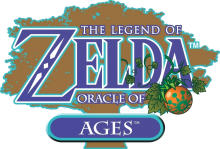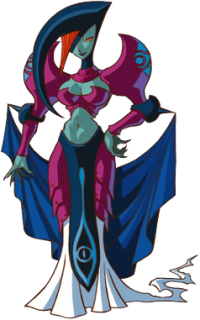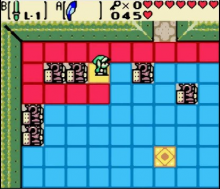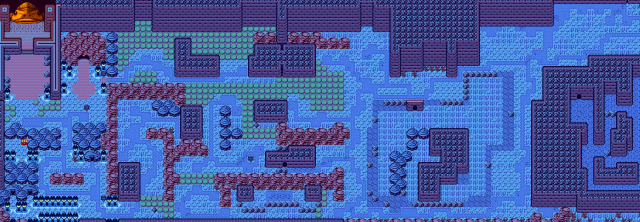What do you Love about Oracle of Ages?
Posted on September 23 2013 by Legacy Staff
 As this article series continues, we examine yet another handheld title. One of a pair, actually. Many people like to classify the Oracle games as one large game, which is understandable, but I prefer to think of them as separate adventures that happen to link together. One is a sequel to the other, and it is up to the player to choose which comes first, sort of like a “Create your own adventure” book. For the purposes of this series, we are going to examine these Oracle games as separate adventures. Oracle of Ages is commonly considered to be the more difficult of the duo, involving more puzzle-oriented challenges that require you to use your wisdom (fitting for a game that stars Nayru, huh?). I wholeheartedly agree; this game contains two of the most mentally draining dungeons in Zelda history: Mermaid’s Cave and Jabu Jabu’s Belly. But I’ll get more into the details of this game’s challenges below, so let’s just jump right into it!
As this article series continues, we examine yet another handheld title. One of a pair, actually. Many people like to classify the Oracle games as one large game, which is understandable, but I prefer to think of them as separate adventures that happen to link together. One is a sequel to the other, and it is up to the player to choose which comes first, sort of like a “Create your own adventure” book. For the purposes of this series, we are going to examine these Oracle games as separate adventures. Oracle of Ages is commonly considered to be the more difficult of the duo, involving more puzzle-oriented challenges that require you to use your wisdom (fitting for a game that stars Nayru, huh?). I wholeheartedly agree; this game contains two of the most mentally draining dungeons in Zelda history: Mermaid’s Cave and Jabu Jabu’s Belly. But I’ll get more into the details of this game’s challenges below, so let’s just jump right into it!
Time Travel
This one seems like a given. It’s the central concept and theme the game is built around. In all honesty, it’s tough to defend this game mechanic against those who despise it. First of all, I would agree with those that state that the time travel concept is essentially a complete ripoff of A Link to the Past‘s Light World/Dark World concept. Heck, even the flashing portal between worlds is carried over. While it certainly isn’t the most creative or original idea, I think that’s what the game designers intended. They were paying homage to one of the series’ best titles, but twisting it to fit the game’s central idea. While the Dark World’s altered landscape made for unique and interesting puzzles, the present time period was altered due to your actions in the past. For instance, seemingly useless vines tangled on the ground become essential once you travel to the past, move the seed from which they sprouted, and returned to the present to see that they have just opened a new path for you. It’s a simple way to utilize time travel as a puzzle mechanic, but makes you feel accomplished regardless. There are several of these kinds of puzzles scattered throughout the game, so if you enjoyed A Link to the Past, you should love this game.
Veran
 Correct me if I’m wrong, but isn’t Veran the first and only female main antagonist in the series? Why does Link always seem to go head to head against a man? In a world where magic rules, the stereotype that men are stronger than women doesn’t really apply. A villain is only as strong as the magic they wield in the Zelda Universe, so Veran should be taken as seriously as any other final boss we’ve seen. She is a powerful sorceress that can shapeshift and possess. As such, she is much more a force that relies on cunning and planning ahead to get what she wants. She inhabits the body of Queen Ambi to build the Black Tower and light the Flame of Sorrow, bringing Ganon one step closer to revival. She also possesses Nayru, confident that Link won’t attack her in that form. At the time, this type of fight was not seen in the Zelda franchise. While players have always had to determine a boss’ weakness before slaying it, we’ve never had to consider the safety of the person attacking us. It’s a tricky situation and if engaged thoughtfully, Nayru could be spared, and Veran temporarily defeated. While the battle itself was not incredibly difficult, it was creative and likely encouraged the possession battles seen later in the series (i.e. Zelda in Twilight Princess).
Correct me if I’m wrong, but isn’t Veran the first and only female main antagonist in the series? Why does Link always seem to go head to head against a man? In a world where magic rules, the stereotype that men are stronger than women doesn’t really apply. A villain is only as strong as the magic they wield in the Zelda Universe, so Veran should be taken as seriously as any other final boss we’ve seen. She is a powerful sorceress that can shapeshift and possess. As such, she is much more a force that relies on cunning and planning ahead to get what she wants. She inhabits the body of Queen Ambi to build the Black Tower and light the Flame of Sorrow, bringing Ganon one step closer to revival. She also possesses Nayru, confident that Link won’t attack her in that form. At the time, this type of fight was not seen in the Zelda franchise. While players have always had to determine a boss’ weakness before slaying it, we’ve never had to consider the safety of the person attacking us. It’s a tricky situation and if engaged thoughtfully, Nayru could be spared, and Veran temporarily defeated. While the battle itself was not incredibly difficult, it was creative and likely encouraged the possession battles seen later in the series (i.e. Zelda in Twilight Princess).
What sets Veran apart from other villains of the series is not only her gender, but her actions. As stated above, she relies on trickery and deceit; wisdom is essentially her main weapon (Another fitting Nayru reference). Most other Zelda games feature final bosses that rely too much on power and overwhelming you physically. That’s all well and good, and it’s a typical characteristic of a meat-headed bad guy, but it’s nice to see a villain who has a plan that develops throughout the course of the game, and threatens the one you’ve risked life and limb to save by fighting you in that body. It makes things more personal and makes victory that much sweeter. Besides Twinrova, I can’t think of another prominent, recurring female villain in the series. Bring on some more, Nintendo!
Puzzles, Puzzles, Puzzles
As stated in the introduction, this game is known for focusing challenge in puzzle solving rather than overwhelming you with enemies. There are two specific puzzles that I would like to discuss. The first is Crescent Island. As I said in my similar article discussing Skyward Sword, I love the idea of Link being stripped of his weapons. It requires him (and therefore, us) to use his mind and solve the puzzles ahead to retrieve his arsenal, proving he’s just as much a hero with his weapons as without. In Skyward Sword, the mission is much more stealth oriented, forcing players to display agility and patience. On Crescent Island, however, you have to use your brain. I have to admit, this mission had me scratching my head on more than one occasion, even in subsequent play throughs of the game. But that’s what I love about it. I’ve beaten several Zelda games so many times, that I can breeze through them with little thought. And maybe that’s my fault, playing the games to the bone (or…chips? Whatever). But I can criticize a lack of truly puzzling missions. For some reason, I never get used to Crescent Island. It’s a well designed area that will have you scouring every corner for at least a half hour. It’s frustrating, but it just makes you feel all the more accomplished when you finally figure it all out.
 The other puzzle I love actually appears a few times. I’m not sure what these rooms are called, but as soon as I begin explaining (or if you look at the picture to the left), you’ll know what I’m talking about: Once you enter, every tile in the room is blue. Once you step on a tile, it turns red. Your job is to turn every tile red without stepping on the same tile twice. I know, I know, these rooms probably made you want to put down the game for good once or twice. But like Crescent Island, the challenge is what I love about it. These rooms require trial and error, memory recall, and patience. Besides a brief appearance in The Minish Cap, I’ve never seen this puzzle utilized in any other Zelda games, and whether you agree or not, I’m going to risk backlash (post your angry comments below) and declare that I would love to see these brain busters return in future games.
The other puzzle I love actually appears a few times. I’m not sure what these rooms are called, but as soon as I begin explaining (or if you look at the picture to the left), you’ll know what I’m talking about: Once you enter, every tile in the room is blue. Once you step on a tile, it turns red. Your job is to turn every tile red without stepping on the same tile twice. I know, I know, these rooms probably made you want to put down the game for good once or twice. But like Crescent Island, the challenge is what I love about it. These rooms require trial and error, memory recall, and patience. Besides a brief appearance in The Minish Cap, I’ve never seen this puzzle utilized in any other Zelda games, and whether you agree or not, I’m going to risk backlash (post your angry comments below) and declare that I would love to see these brain busters return in future games.
Under the Sea
If you compare the map of Holodrum with that of Labrynna, you’ll notice that the latter’s is significantly smaller. Of course, the argument made in this game’s defense is that Labrynna’s map is actually bigger since there are two time periods, doubling the space to roam. Fair enough, but the two worlds really are more or less the same. Of course there are significant differences here and there, but it doesn’t feel like a new territory to me while playing the game. However, the argument for Oracle of Ages still stands as the map is made even larger by the presence of an underwater world. Labrynna has never felt small to me, and this is probably the big reason why. You’ll spend lots of time swimming around the southern sea, so learn to love it or play Oracle of Seasons. The Mermaid Suit is a new and inventive item that allows Link to scour the bottom of the sea, allowing you to discover new paths, find treasure, and meet the Zoras. While the suit itself can be a pain to navigate (if you’re playing on the 3DS, use the Control Pad to navigate, not the Control Stick. You’re welcome), the limited buttons on the Gameboy Color and the ability to use items underwater make this tiny flaw forgivable.
What do you all love about Oracle of Ages? Do you agree or disagree with the points above? Which game would you like to discuss next? Comment below and let’s talk about it!
Games already discussed:
The Legend of Zelda
The Adventure of Link
A Link to the Past
Link’s Awakening
The Wind Waker
Four Swords
Four Swords Adventures
Twilight Princess
Phantom Hourglass
Skyward Sword





